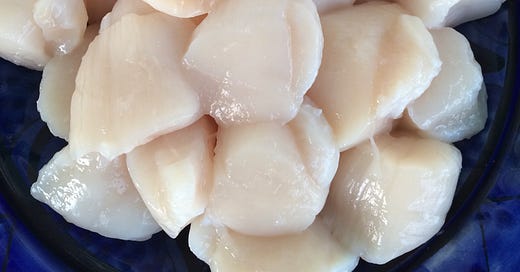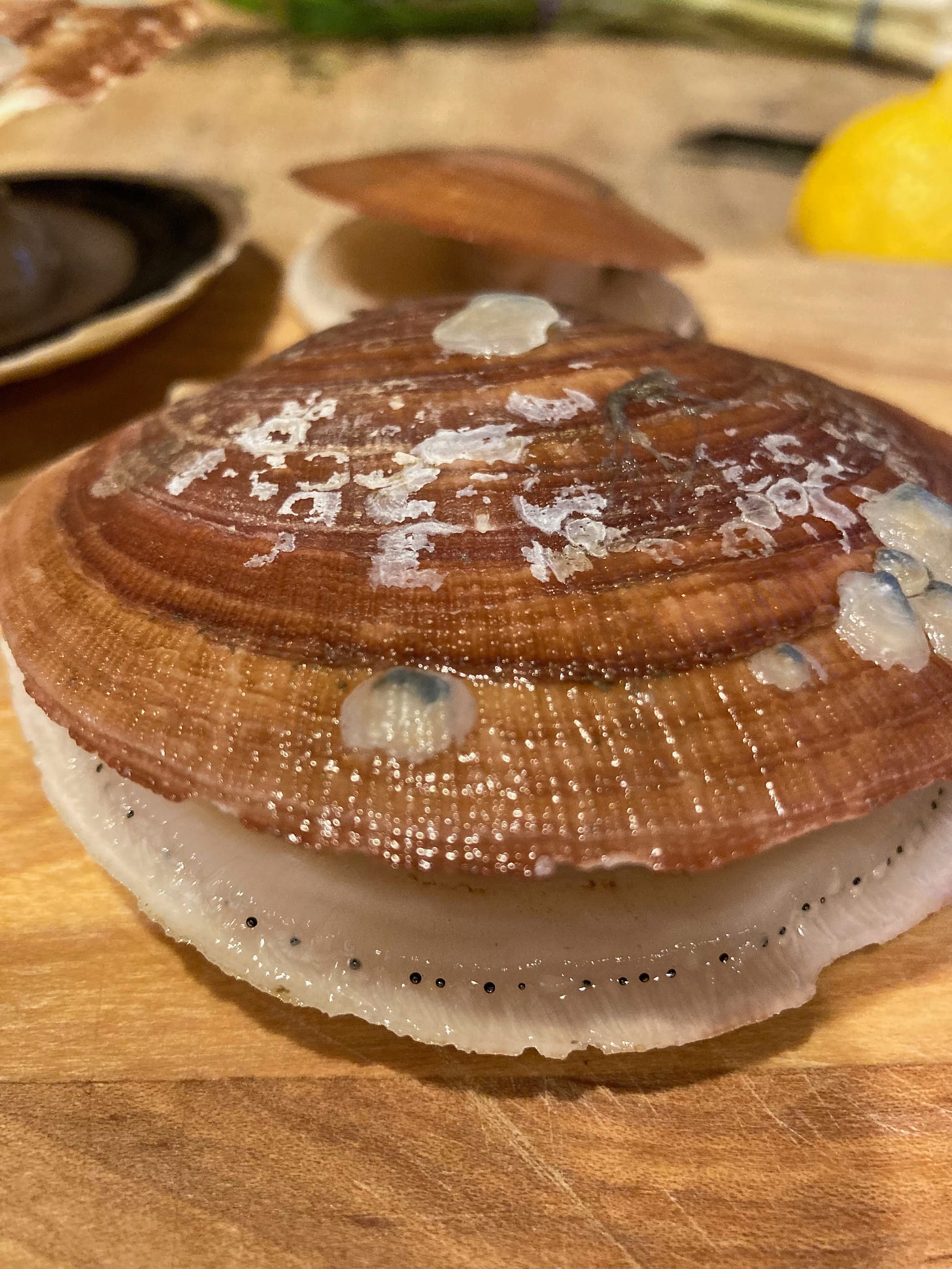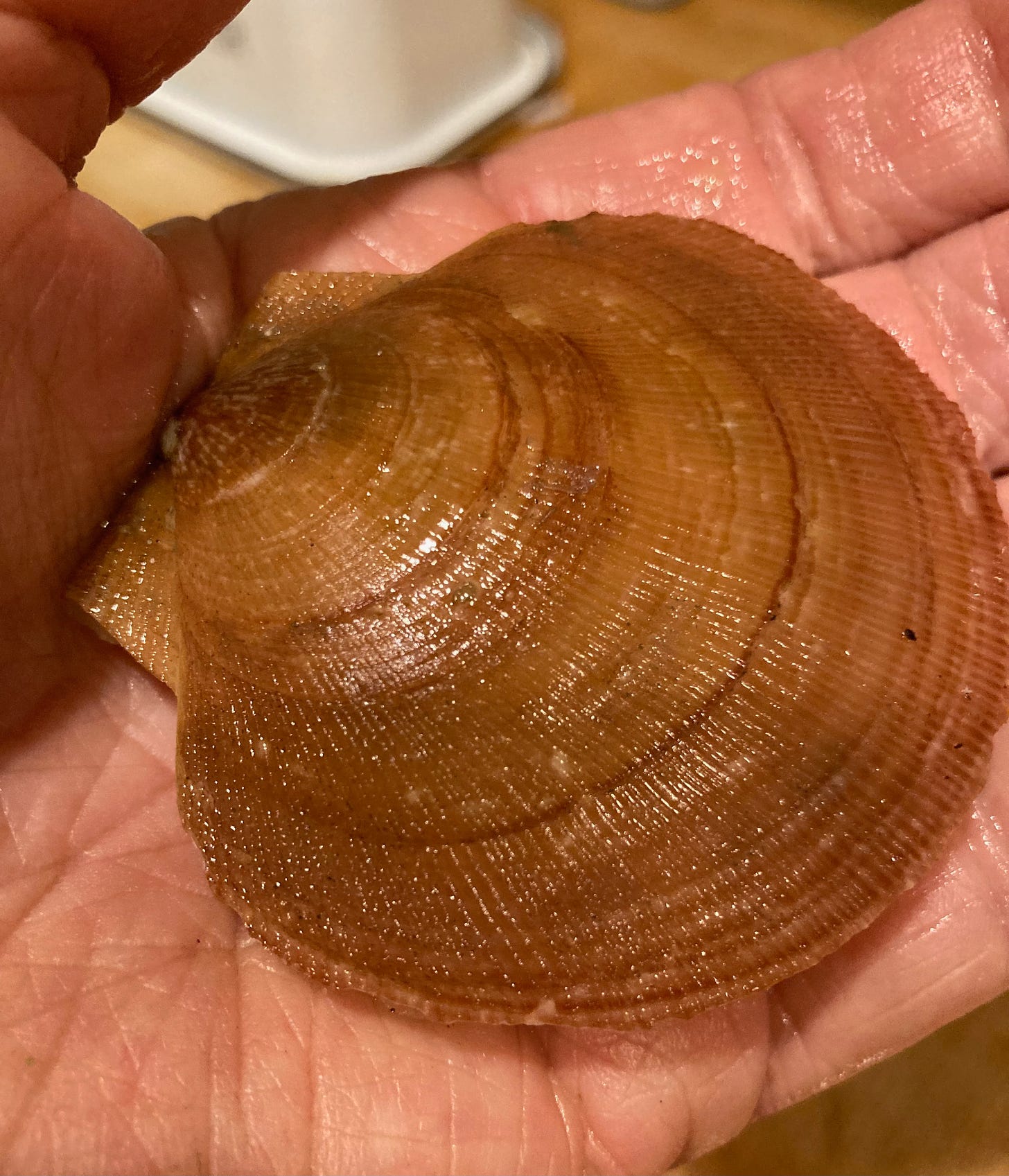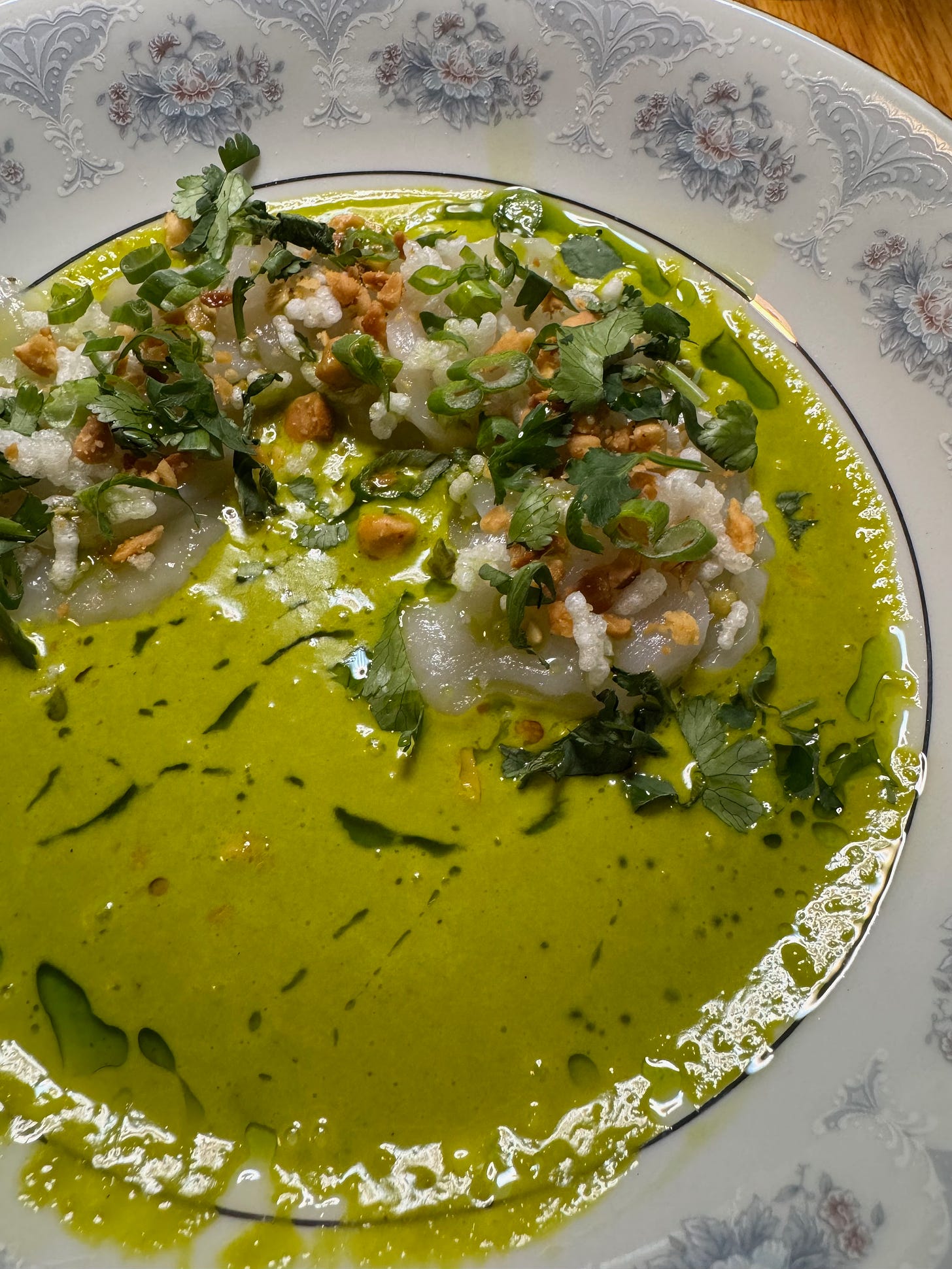Did you know. . . ?
There are around 400 species of scallops worldwide but only 18 of them are harvested for human consumption.
Each scallop has between two and three hundred separate eyes, lining the edges of its curving shells and attuned to the approach of predators.
Scallops spawn in late summer, August into September, on the quarter moon—just imagine, deep down in the ocean, how do they know it’s the quarter?
What we eat is not the scallop itself but rather the adductor muscle, a firm but tender white plug that holds the two shells together, opening and closing them.
Scallops are filter feeders, making them even more desirable since they not only taste good but they actually improve water quality by filtering out particulates.
I learned all of this and more last week from an engagingly chatty lecture by Phoebe Jekielek, who until just the other day was Lead Scientist and Director of Research at the Hurricane Island Center for Science & Leadership, an organization that promotes education and research into natural oceanic resources. Scallop aquaculture is a main focus and Jekielek has been instrumental in developing research protocols with the goal of comparing farmed to wild shellfish. Somewhat surprisingly, farmed scallops are superior to wild ones—larger, with heavier meats, stronger, more resilient shells, and an enhanced larval output. Phoebe is moving on to finish her doctorate at the University of Maine but meanwhile she reassured her audience on the great potential of scallops for aquaculture.
With so many treasured seafood species disappearing from the once prolific Gulf of Maine (think shrimp, think cod, think lobsters, which are scuttling away from our warming waters as fast as their little crawlers will move), more and more attention is being focused, correctly in my estimation, on the possibilities of farming fish and shellfish (as well as kelp and other seaweeds). Oysters and mussels are the major growth figures in North Atlantic aquaculture, but why not scallops, a shellfish that is almost as popular as shrimp? Like shrimp, scallops are appreciated even by people who “don’t eat fish,” because they’re easy to cook and easy to eat (no bones). The US has the largest scallop fishery in the world, so why not add to it through farming?
I grew up eating scallops, a favorite winter fishery in Maine, but I never delved beyond the adductor muscle until one day in Baiona, a small fishing port in northwestern Spain’s Galicia province, I came upon a restaurant with a display of whole scallops on the half shell, the white plugs of muscle almost surrounded by a brilliant curve of red-orange. That was the scallop “roe,” something we rarely see in the U.S. It’s actually the scallop’s gonad and it exists both in males where it’s a dull, greyish white, and in females, where it’s an enticing bright rose and called appropriately coral.
So why do we not find scallops with their roes attached in our seafood markets? It’s complicated but in Maine, which is a major scallop producer, by law only the adductor muscle can be harvested because of the possible presence of biotoxins in the viscera, including the gonads, of scallops. The state reassures us that “there are no biotoxin threats found in the scallop adductor meats landed in Maine,” but to be on the safe side, gonads and other viscera are removed at sea.
Could farming present a way around this, since it takes place in a controlled environment? Well, yes, but in order to offer farmed whole scallops, the farmer must collect three separate live samples, seven days apart, and pay for them to be transported and tested in a certified laboratory. This is not cheap. Further, leaseholders must continue testing as long as they are producing whole-shell scallops for the market. So it may be a long wait for those enticing gonads to appear on your plate.
Meanwhile, if you are shopping for scallops there are a few cautions to keep in mind. The most important is to ensure that the scallops are so-called “dry scallops,” meaning they have not been treated with sodium tripolyphosphate (STPP), a solution that bleaches the scallops and lets them plump by absorbing water. Apart from an unwelcome chemical addition (although the FDA certifies STPP as GRAS—Generally Regarded as Safe), this means that you cannot sear or brown the scallops in your black iron skillet or any other pan you happen to have because they will exude all that water and boil rather than sear. And I do believe that searing scallops is the quickest, easiest, and tastiest way to prepare them. Any fish monger should be able to tell you whether or not the scallops have been treated.
Another important truc for scallops: There is a vertical muscle or strap that runs up the side of each scallop, confusingly called the abductor muscle (as distinguished from the adductor muscle, the part we eat). It’s easy to detect as it’s more opaque than the alabaster white of the adductor muscle. This is easy to cut off with a paring knife and should be removed as it’s tough. When I cook scallops, I save these bits to add to the cat’s bowl.
If you can access really fresh scallops (having trouble? you might want to try my friend Togue Brawn’s Dayboat Scallops strictly from Maine), join legions of Maine connoisseurs and serve them up raw, sometimes thinly sliced to make a crudo presentation. They are melt-in-the-mouth delicious, dressed with a thread of exra-virgin, a spritz of lemon, a dash of freshly minced herbs. Or in this more elaborate presentation from my daughter’s restaurant, Nīna June, in Rockport, Maine:
Paid subscribers will find recipes below for cooking scallops, along with a couple of easy but elegant sauces to serve with them. Ismail Merchant’s Indian-flavored spinach, Palak Jannu, scattered with a few sherds of lemon peel, makes a lovely dark-green bed for browned scallops, while a Catalan romesco sauce, thick with crushed almonds and olive oil and bright with tomatoes and red peppers, is a brilliant wintertime add-on to a piled-up platter of seared scallops hot from the skillet.
Keep reading with a 7-day free trial
Subscribe to On the Kitchen Porch to keep reading this post and get 7 days of free access to the full post archives.









